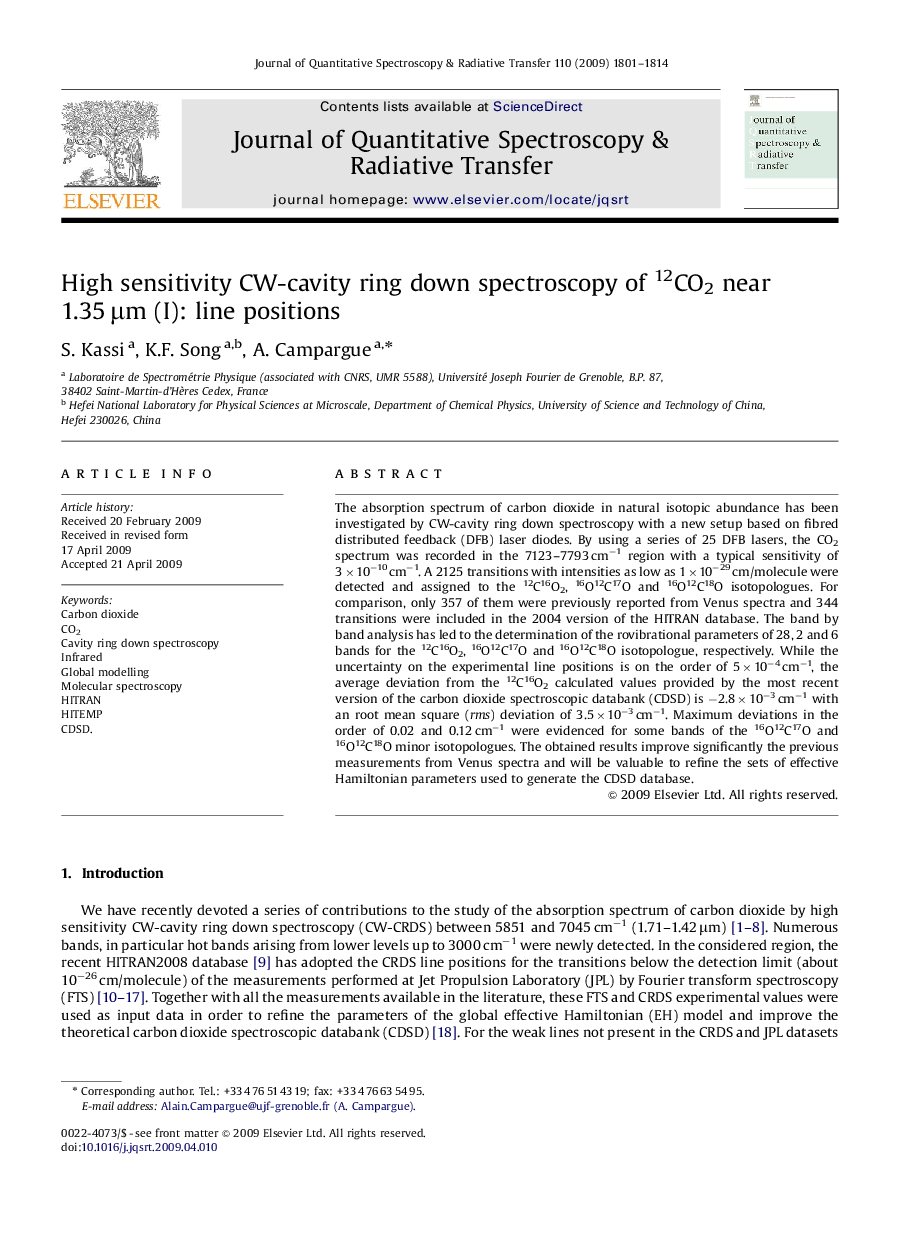| Article ID | Journal | Published Year | Pages | File Type |
|---|---|---|---|---|
| 5430052 | Journal of Quantitative Spectroscopy and Radiative Transfer | 2009 | 14 Pages |
The absorption spectrum of carbon dioxide in natural isotopic abundance has been investigated by CW-cavity ring down spectroscopy with a new setup based on fibred distributed feedback (DFB) laser diodes. By using a series of 25 DFB lasers, the CO2 spectrum was recorded in the 7123-7793Â cmâ1 region with a typical sensitivity of 3Ã10â10Â cmâ1. A 2125 transitions with intensities as low as 1Ã10â29Â cm/molecule were detected and assigned to the 12C16O2, 16O12C17O and 16O12C18O isotopologues. For comparison, only 357 of them were previously reported from Venus spectra and 344 transitions were included in the 2004 version of the HITRAN database. The band by band analysis has led to the determination of the rovibrational parameters of 28, 2 and 6 bands for the 12C16O2, 16O12C17O and 16O12C18O isotopologue, respectively. While the uncertainty on the experimental line positions is on the order of 5Ã10â4Â cmâ1, the average deviation from the 12C16O2 calculated values provided by the most recent version of the carbon dioxide spectroscopic databank (CDSD) is â2.8Ã10â3Â cmâ1 with an root mean square (rms) deviation of 3.5Ã10â3Â cmâ1. Maximum deviations in the order of 0.02 and 0.12Â cmâ1 were evidenced for some bands of the 16O12C17O and 16O12C18O minor isotopologues. The obtained results improve significantly the previous measurements from Venus spectra and will be valuable to refine the sets of effective Hamiltonian parameters used to generate the CDSD database.
